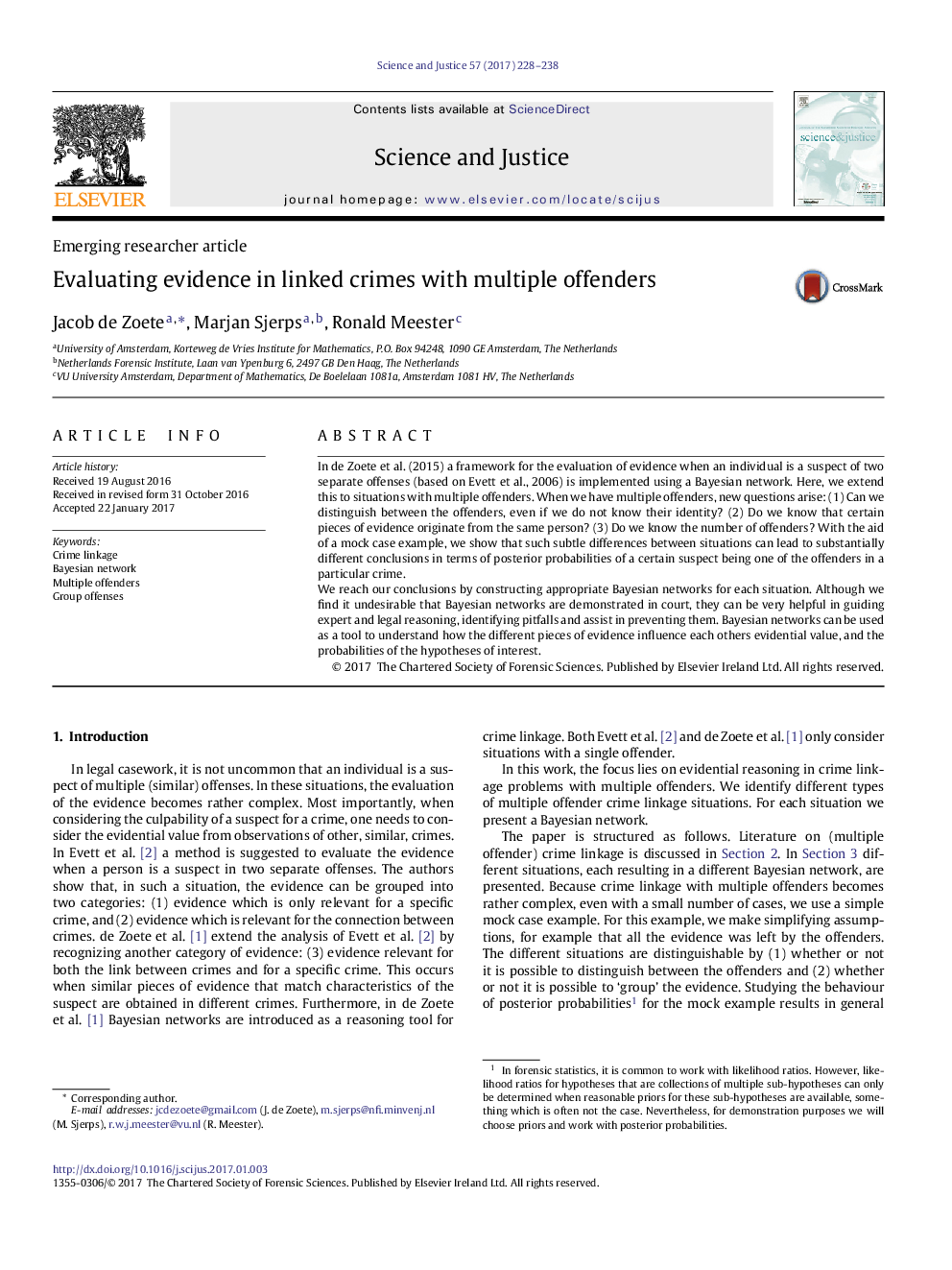| کد مقاله | کد نشریه | سال انتشار | مقاله انگلیسی | نسخه تمام متن |
|---|---|---|---|---|
| 6463389 | 1362099 | 2017 | 11 صفحه PDF | دانلود رایگان |
- Crime linkage is modeled with Bayesian networks for multiple offender scenarios.
- Different situations for these scenarios are introduced using a mock case example.
- The influence of the assumed situation on the probabilities of interest is examined.
- We discuss the added value of Bayesian networks as reasoning tools in legal practice.
- We identify a pitfall in intuitive reasoning, the 'evidence association fallacy'.
In de Zoete et al. (2015) a framework for the evaluation of evidence when an individual is a suspect of two separate offenses (based on Evett et al., 2006) is implemented using a Bayesian network. Here, we extend this to situations with multiple offenders. When we have multiple offenders, new questions arise: (1) Can we distinguish between the offenders, even if we do not know their identity? (2) Do we know that certain pieces of evidence originate from the same person? (3) Do we know the number of offenders? With the aid of a mock case example, we show that such subtle differences between situations can lead to substantially different conclusions in terms of posterior probabilities of a certain suspect being one of the offenders in a particular crime.We reach our conclusions by constructing appropriate Bayesian networks for each situation. Although we find it undesirable that Bayesian networks are demonstrated in court, they can be very helpful in guiding expert and legal reasoning, identifying pitfalls and assist in preventing them. Bayesian networks can be used as a tool to understand how the different pieces of evidence influence each others evidential value, and the probabilities of the hypotheses of interest.
Journal: Science & Justice - Volume 57, Issue 3, May 2017, Pages 228-238
